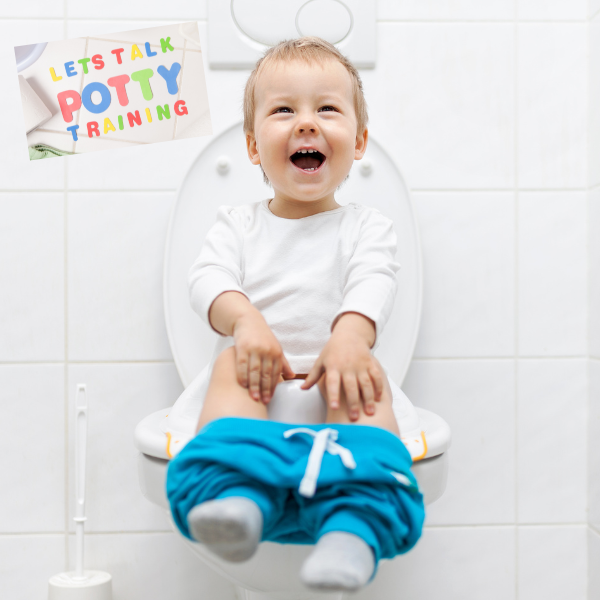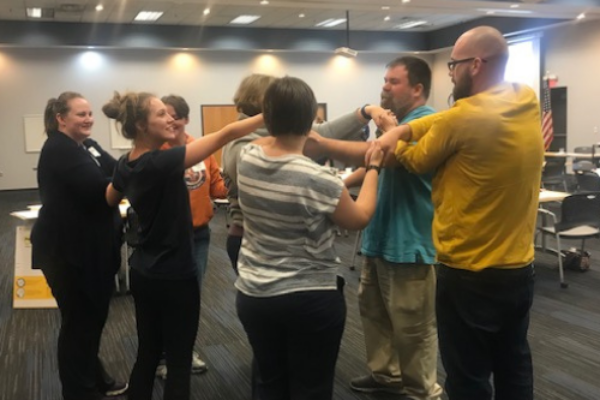
6 Tips For Potty Training Success
Is your child ready to learn to use the potty all on their own? Michigan State University Extension early childhood educators expect that most children are physically capable of toilet training between the ages of 18 months and 3 years of age. However, physical capability and emotional readiness do not always occur at the same time! Toilet training is one of the first skills that a child completely controls. Parents can bribe, plead, schedule and hope that their child will pick up this skill quickly, but until the child is ready and motivated, it will not happen!
Tips For Potty Training Success
- Wait for signs of readiness: Is your child telling you that they have to go potty? Hiding when they go to the bathroom? Asking to have their diaper changed as soon as it is wet or dirty? If you wait until your child is showing an awareness of their natural urges to use the bathroom, you will succeed much more quickly. Once they begin to show that they know they have to go, or have just went, it will be easier to move them out of that diaper and on to the potty! Another question to ask is if you are ready. Potty training takes up to three months of devoted effort on the parent and caregiver’s behalf. Reminders, accidents and cleanup are to be expected. Tips on physiological readiness and the motor skills needed for toileting are available.
- Choose your time wisely: Think carefully about when you want to start your child on this journey. Do you have a vacation coming up? A long drive in the car? A new baby coming? While it’s tempting to push potty learning prior to new baby’s arrival, or before you head out of town to lesson the load, but these situations often end in failure or a regression of new skills. Wait for a long stretch of time at home, when the routine is consistent, the caregivers are the same and nothing big or new is occurring so your child can feel safe and secure.
- Have a plan: What words will you use? Take into account the need to talk to your child in public, and their ability to communicate to others that they need to go to the bathroom. Have a little potty or potty seat at home that fits their smaller body. Set a timer or routine reminders about when to try the potty. Start talking with your child about identifying the feeling that they have to go to the bathroom. The American Academy of Pediatrics has a wealth of great articles and videos on potty training.
- Make it exciting: Consider purchasing new fun undies with their favorite character, a potty seat that is just their size, a bright colored step stool to reach the sink or other fun items to make their new skill exciting! Also provide lots of verbal praise and encouragement, “You went to the bathroom on the potty! What a big girl!” Children enjoy making their parents so excited that they clap, sing and dance around to celebrate success! Some parents find a sticker chart to be helpful as well.
- Keep it positive: As the saying goes, accidents will happen. It’s part of the learning process. Do not shame your child when they do have an accident. Scolding and other negative reinforcement typically backfire. Simply provide reflective feedback, such as: “Uh oh! You had an accident! Next time lets try to go on the potty! Come on and help Mama clean it up.” If accidents are occurring with frequency, it might be time to reevaluate your plan. Does your child need more reminders? Are they not ready yet? Accidents in a previously potty-trained child can indicate a health need such as a urinary tract infection, and should be followed up by contacting your child’s pediatrician.
- Expect nights to take longer: It takes most children longer to be dry at night then during the day. These accidents usually decrease in frequency until they are gone usually by age five. Expect to need to continue to use a pull-up or diaper during this time frame until your child is consistently waking up dry. Do not shame or discipline children for prolonged night wetting. For some children, night wetting, also known as nocturnal enuresis will continue into childhood. One in four children who are five years old continue to experience bed-wetting, and 1 in 5 at age seven. For most children, there is no need for medical intervention until reaching ages eight to ten. Boys are more likely to have trouble staying dry at night which tends to have a genetic component, usually the father, who also experienced bed-wetting. The good news is that there are commercially available products for older children that have trouble staying dry, so that they can attend sleepovers, camp, etc. and not have to have the associated worrying of waking up wet in front of their peers. If bed-wetting remains a constant issue and you have concerns, your pediatrician is a good source of more developmentally appropriate information.
Taking time to plan ahead before you approach potty training, it can help make this task become completed with a minimum of fuss and tears. Before you know it, your big kid will have this skill down and you will be able to move on to the next big skill.
This article was originally published by Michigan State University Extension.




